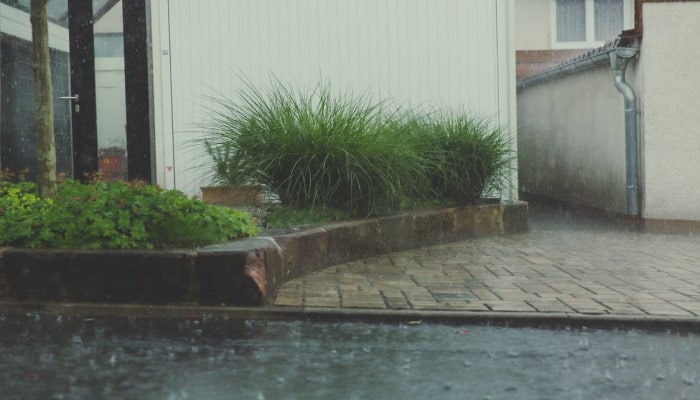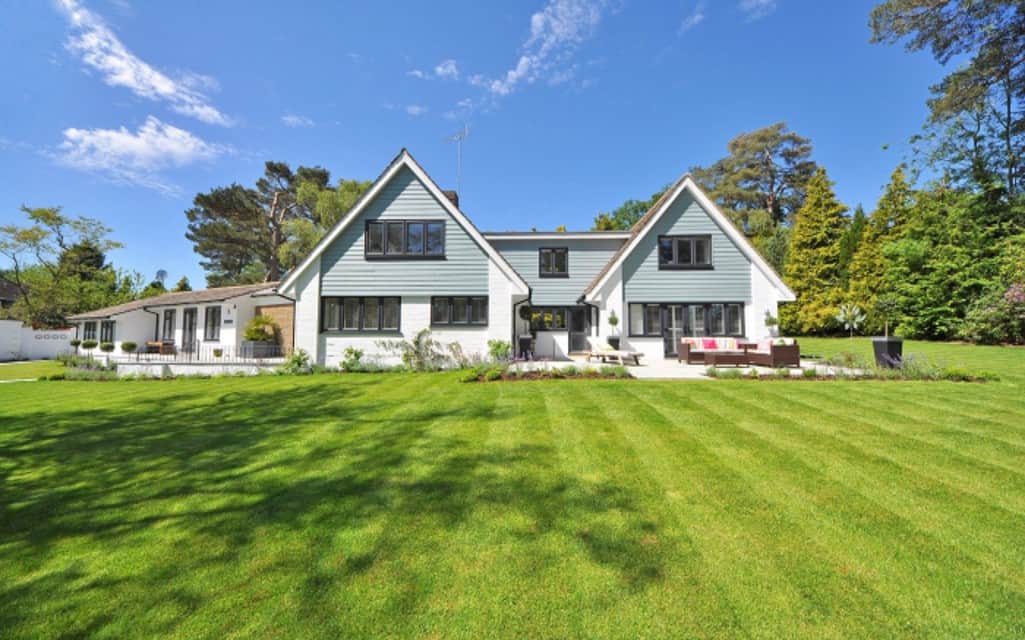Preventing water damage in your yard can seem like a never-ending process. Not everyone faces this struggle during their daily yard care, but anyone who has ever tried to manage water ponding in their yard or streaming through it knows how frustrating this problem can be.
Even if you have water issues that are related to a single season of the year, water damage can last for months and affect the growth cycle of plants while damaging and undermining landscaping. In situations where there is a large volume of water, your home might even be impacted by your water issue!
If you want to know how to prevent water damage to your lawn and your garden, read on for more information!
Preventing Water Damage to Your Lawn and Garden
Water damage is usually a bigger threat in places that get a lot of annual rain. Seattle and similar places that experience year-round rain often have more challenges as far as drainage solutions. However, if you live in a desert location or a place that gets intense seasonal weather, you might experience just as many challenges related to water in your yard that should not be there.

1. Driveway Drains
This can be one of the most effective ways to improve your yard’s drainage. Many people do not realize just how much a driveway that does not drain can affect their lawn and their garden. Driveways that were installed without considerations for drainage can be sources of large amounts of standing water, or they can create rivers of runoff that undermine landscaping and garden features. In some cases, the water that is not draining off the driveway can also cause damage to the driveway itself.
If you want to solve the problem of a driveway that does not drain, there are many great drainage solutions for your driveway. You can install a slot drain for this kind of drainage need. In most cases, these slim drains that are easy to insert at the base or along the sides of your driveway will handle all of the runoff that your driveway needs to shed during the winter months or a heavy rainstorm.
Stainless steel channel drains are perfect for these locations because they do not take up much space and are durable enough to hold up to cars driving across them during the lifetime of your driveway.
2. Adjust Slope
You might find that your yard was not correctly sloped when additional features were installed around your home. This might mean that your lawn or your planter beds were not built with the right slope in mind to allow them to drain properly.
The process of adjusting the slope of your yard can be arduous at first, but it is well worth the time and energy that goes into the process if your yard can drain properly once it’s done. Part of your process of adjusting the slope in your yard may also include installing trench drains or other drainage solutions to help capture the water and run it out to the street for you.
3. Standing Water Related to Pool or Fountain
If you have a pool or a fountain in your yard or garden, it is sometimes possible that this is the source of your standing water issues. You should always set up proper drainage around pools and fountains when they are installed to prevent standing water or an excess of water runoff when these items are in use.
If you need to solve the issue of standing water surrounding a garden feature or a pool, slot drains are often the best solution. They are easy to install and they can make a big difference in managing standing water that might be harming your lawn or your planter boxes nearby.

4. Inspect and Repair Gutters
Sometimes the standing water or excess runoff in your yard is not from groundwater or other sources, but is instead running off your roof and pouring onto your yard. Heavy precipitation that is not captured by gutters can pour off the surfaces of your roof in sheets which can damage flowers and shrubs or undermine planters and lawns.
If you have been experiencing unexplained issues with standing water or rivers of water running through your yard, make sure to examine your gutters.
Read More: DIY Ideas to Improve Your Garden
5. Don’t Overwater
Always make sure that you are not setting your sprinkler system to water your yard when it is the wrong season. Overwatering can create marshy standing water situations as well as causing ponding that will kill plants that are not made for this kind of growing environment.
In some cases, watering when there has recently been rain can cause water to stand along pathways, in your driveway, or in the middle of your yard. Always make sure to remember to hold off on watering your lawn or your garden when it has been raining.
6. Improve Your Soil
Sometimes the culprit behind standing water is actually your soil itself. Clay soils and compacted soil cannot absorb much moisture and will naturally create more runoff than other soil types. You can fix this problem by removing clay soils from garden beds or by replacing a portion of your yard’s existing soil with quality soil that will drain.
Pair soil improvement with proper drain installation and your yard will be ready to withstand even the toughest winter weather or rainstorm!
Managing Water Damage in Your Yard Doesn’t Have to Be a Struggle

There are many reasons why your yard might be suffering from standing water. Most of the time, however, the solution involves quality drain installation and proper yard slope and grading. Always make sure to have an expert come look at your yard if you are experiencing drainage problems more than a few times each year.



